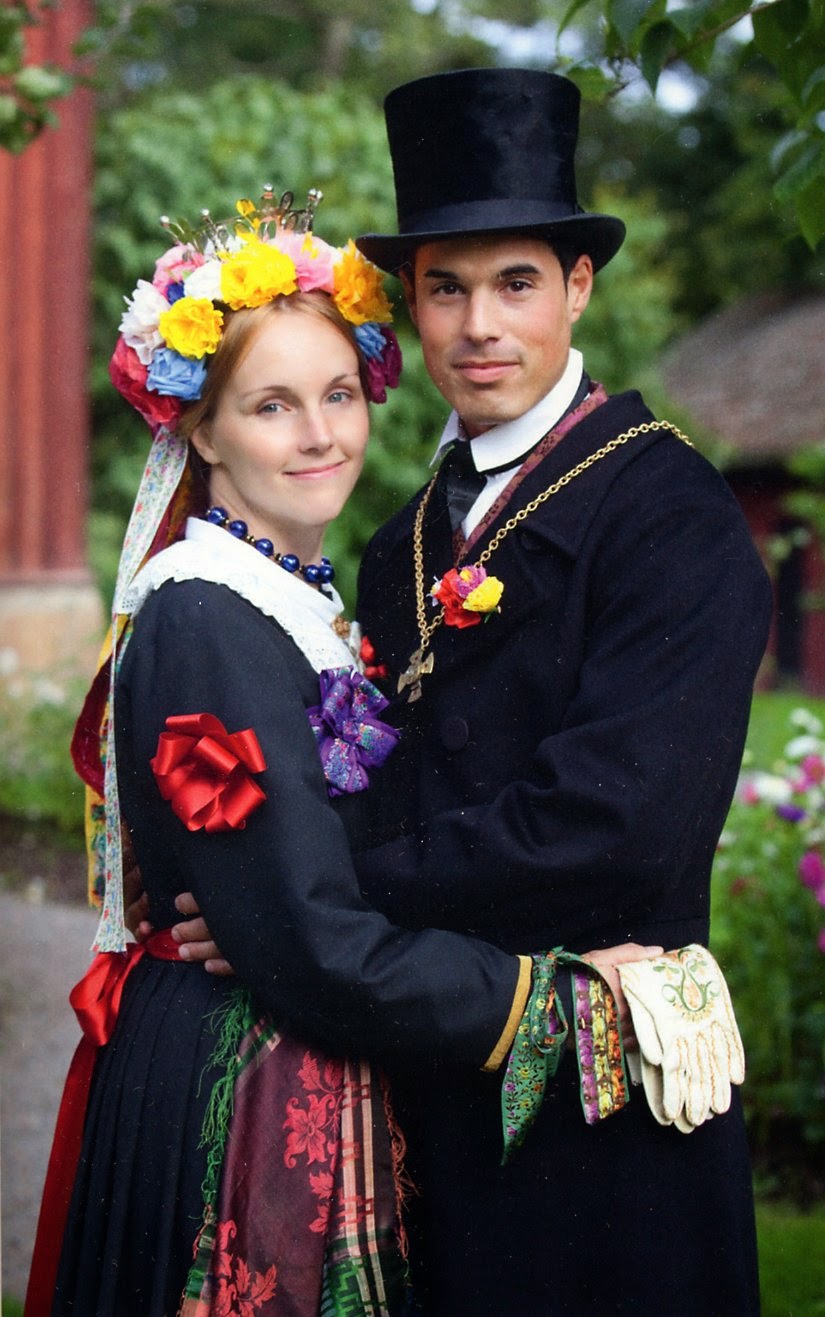
Folkloristische Tracht ab 194,61 € Traditionelle kleider
9 Traditional Dresses from Different Parts of Europe! Sense of human fashion is a factor of a specific era, prosperity and self-expression. It sure bears a semblance with the ongoing socio-political role, gender representation and heritage. Oftentimes, fashion narrates a story!

Pin on traditional dress
The national dress and general movement toward going back to more traditional clothing was seen as an alternative to the modern industrial wave of fashion that blew through Europe at the time. Crown Princess Victoria of Sweden in the Swedish National Dress ( Sveriges Nationaldräkt ) in 2010.

FolkCostume&Embroidery Overview of the Folk Costumes of Europe, Sweden
1. Germany - Dirndl & Lederhosen Source- Pinterest The traditional dress of Germany for females is called 'Dirndl' and for the males is called 'Lederhosen' The dirndl consists of a blouse and a skirt. A corset is also worn depending on the region.

Pin on Traditional European Beauties
Iceland Traditional Dress. The traditional dress of Iceland looks a lot like Sweden's and Denmark's costumes. The dress is called Kyrtill which is a tunic or a skirt. Upphlutur was worn above it which is the bodice and mainly black as shown in the picture. Men used to wear woolen trousers which are called Holmenskloede.

Europe Portrait of a couple wearing traditional clothes, Osijek
November 13, 2020 There are fifty-one countries belonging to the European countries, including the seven transcontinental countries such as Russia, Azerbaijan, Turkey, Georgia, and Kazakhstan. Cyprus and Armenia are likewise part of the European Nation.

FolkCostume&Embroidery Short Overview of Traditional Bridal Dress in
The traditional dress of the Herero women in Namibia is an adaptation of Victorian dress, as worn by the German colonists they fought in a bloody conflict at the start of the twentieth century, and now retained as a proud part of Herero identity. The silhouette is distinctive: a full, floor-length skirt, fitted bodice with puffed sleeve, with a.

FolkCostume&Embroidery Overview of the Folk Costumes of Europe
Clothing of Late Antiquity, 3rd- to 7th-Century Europe . Traditional Roman garb consisted largely of simple, single pieces of fabric that were carefully wrapped to cover the body. As the Western Roman Empire declined, fashions were influenced by the sturdy, protective garments of Barbarian peoples.

FolkCostume&Embroidery Overview of the Folk Costumes of Europe Folk
European folk dress is typically a bit more complicated than that. When we talk about "what people wore historically", particularly on the English-language internet, we typically mean "what English and Parisian people wore". But prior to the late eighteenth century, visitors to different countries/regions across the continent would see.

Pin by Галинъ Колевъ on Bulgarian Folklore and Customs Folk clothing
Cities began to implement laws, known as sumptuary laws, to try and control how people dressed: regulations were set in Germany in the late medieval period, but also appeared in Italy in 1157,.

Traditional European Clothing/Costumes Stormfront
Looking for European Dress? We have almost everything on eBay. No matter what you love, you'll find it here. Search European Dress and more.

Pin on European costumes
Generally, traditional dress in Europe is composed of light, natural materials such as linen and cotton, often decorated with embroidery and lace. Additionally, sheepskin and fur are often used to accent the garments. Below are some of the main features that generally characterize traditional European attire: Lightweight and breathable fabrics

Pin by Journeys4Life Travel on Traditional costume Traditional
Germany Most Germans wear modern clothes in their everyday lives. But not Bavarians ( Bavaria is the largest region in Germany). Bavarians have a special place in their hearts for their traditional clothing. Traditional clothes are called tracht in German. Many Bavarians wear tracht all year round, especially older women in villages.

Cultures of Eastern Europe Traditional outfits, European dress, Folk
Belarus - Traditional clothes in Belarus were usually handmade from flax, hemp, wool, and leather, which are suitable materials for the cold climate. A long linen shirt is a key part of the attire for both men and women, though women wear a long skirt over this shirt. Great detail often goes into the creation of men's belts and sashes as well.

Short Overview of Traditional Bridal Dress in Western Europe
Free 2-day Shipping on Millions of Items. No Membership Fee. Shop Now! Save Money. Live Better. Shop Popular Items on Apparel & Accessories at Walmart®.

FolkCostume&Embroidery Overview of the Folk Costumes of Europe
Any how, the traditional dress of Belgium is a charming European attire. Traditional Belgian Costume: From the Mo's photo stream on flickr The Belgian male population love to wear Smocks and Berets, the trends of which were picked by the Belgians from the French during their period of oppression upon them.

Kirtle Corset Dress Central Europe Traditional Costume XVI Century in
What is the typical European clothing for men and women like? 1. Nordic countries 2. British islands 3. Iberian Peninsula 4. Balkan peninsula 5. Eastern Europe 6. Central Europe Nordic countries